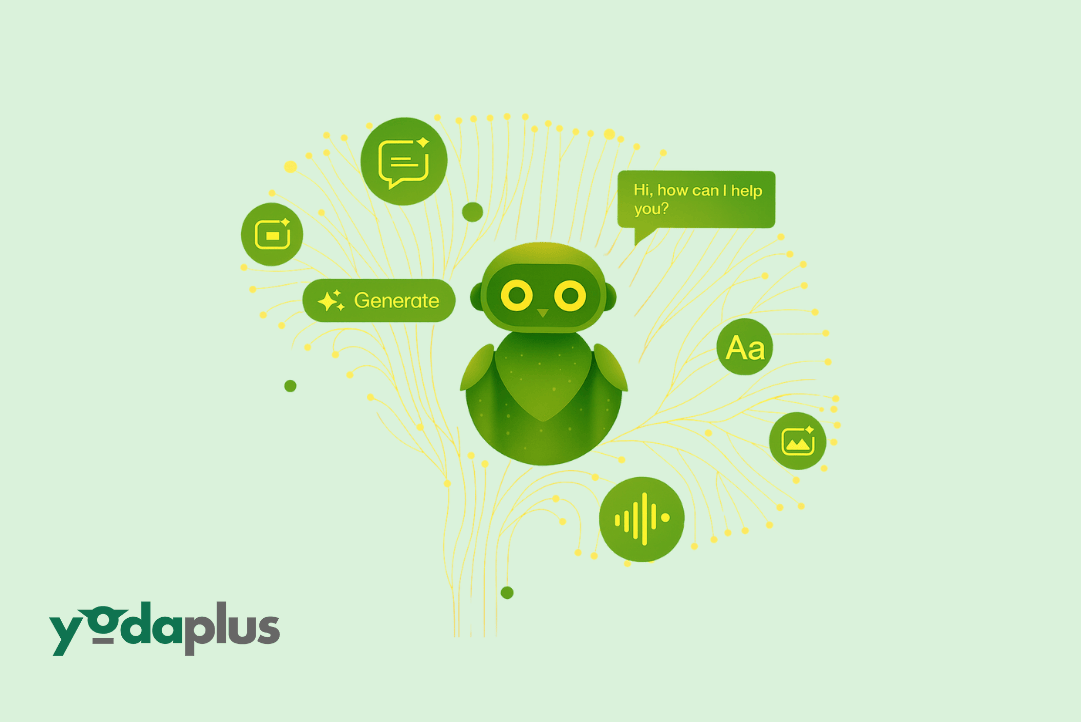
Is AgentOS the Next Operating System for AI Workflows?
September 23, 2025 By Yodaplus
The rise of Artificial Intelligence has created a need for systems that can manage complexity. Traditional software cannot keep up with the demands of AI workflows that involve multiple AI agents, real-time decisions, and huge amounts of data. This is where the idea of AgentOS enters the picture.
AgentOS is being discussed as the next layer of infrastructure for Agentic AI, much like an operating system for intelligent workflows. It is designed to coordinate autonomous agents, manage resources, and integrate with blockchain, cloud, and enterprise systems. But is it truly the next big step for AI technology?
What Makes AgentOS Different?
A traditional AI system usually runs on applications that focus on narrow tasks such as image recognition, NLP, or machine learning models. But the move toward Agentic AI means we need something more.
AgentOS provides a base where AI agents can collaborate like applications on a computer. Each agent has a role. Some act as workflow agents handling tasks, while others are intelligent agents analyzing data or coordinating communication. Together, they work in a multi-agent system that delivers end-to-end results.
This creates an agentic framework similar to what we see in MCP, which is becoming central for autonomous systems. AgentOS aims to make these interactions seamless and structured.
Why AI Workflows Need an OS
As more businesses adopt AI applications, the complexity increases. A bank may use AI-powered automation for compliance, AI-driven analytics for credit scoring, and Conversational AI for customer support. Without a system to manage them, scaling becomes impossible.
AgentOS steps in as the backbone of autonomous AI. It manages communication between agents, allocates resources, and ensures compliance with Responsible AI practices. This is why many see it as the natural evolution in the future of AI.
For companies, this means better efficiency, fewer integration failures, and more reliable results. For example, AI in logistics benefits from workflow agents that monitor supply chains while AI agents handle predictive tasks like demand planning and market risk analysis.
Role of Generative and Agentic AI
The growth of generative AI and gen AI tools has accelerated interest in AgentOS. Generative AI software can create text, images, and even code, but without orchestration it becomes hard to integrate into business systems.
AgentOS enables gen AI use cases by connecting creative outputs with structured decision-making. For example, agentic AI platforms can use vector embeddings and semantic search to make generative outputs more relevant. These capabilities make gen AI and Agentic AI solutions scalable across industries.
Key Components of AgentOS
For AgentOS to succeed, it needs core building blocks:
-
AI Frameworks: Support for Deep Learning, Neural Networks, and AI model training.
-
Knowledge-Based Systems: These allow integration with structured rules and compliance data.
-
Semantic Search and Prompt Engineering: Crucial for AI applications where context matters.
-
Reliable AI: Ensuring outputs meet quality standards, especially for financial advisors, portfolio managers, and other decision-makers.
-
Explainable AI: Offering transparency for AI risk management and regulatory approval.
Together, these create a foundation where autonomous agents can operate much like applications inside an operating system.
Industry Use Cases
Finance
In finance, equity research reports, investment research, and financial reports all depend on high accuracy. AgentOS can support AI-driven analytics, ai data analysis, and tools like GenRPT Finance to help financial consultants and asset managers automate reporting.
Logistics
For AI in supply chain optimization, AgentOS allows workflow agents to manage shipping schedules, track inventory, and apply AI-powered automation to reduce errors.
Business Operations
In Artificial Intelligence in business, AgentOS connects AI-powered automation, data mining, and AI-driven analytics into a single environment. It helps autonomous systems adapt and scale while reducing costs.
Challenges to Adoption
While the idea of AgentOS is powerful, challenges remain. Building a standard that works across industries requires collaboration between vendors, regulators, and enterprises. Ensuring explainable AI and compliance with Responsible AI practices is critical.
Another hurdle is scalability. An ai agent software stack must handle millions of interactions while remaining cost-effective. This requires ongoing innovation in AI frameworks, ai agent tools, and agentic ai platforms.
The Future of AgentOS
The future of AgentOS depends on how well it can support complex ai workflows. As AI innovation continues, and as autogen AI and agentic ai use cases grow, the need for a reliable system will increase.
We may see AgentOS evolve into the central layer for Artificial Intelligence solutions, powering autonomous agents, multi-agent systems, and AI in logistics. It could become as important to the AI era as Windows and Linux were to personal computing.
Conclusion
AgentOS represents more than just another tool. It is a potential operating system for the future of AI, built to manage the rise of Agentic AI, AI agents, and autonomous AI. By coordinating generative AI, knowledge-based systems, and workflow agents, it offers a path toward scalable, reliable, and explainable AI applications.
The success of AgentOS will depend on adoption, regulation, and trust. But as industries continue to expand their use of AI-powered automation, the need for such a system becomes clear. AgentOS may not only shape AI workflows but also define how Artificial Intelligence in business evolves in the years ahead. With Yodaplus’ Artificial Intelligence solutions, enterprises can accelerate this shift, combining innovation with practical deployment to build the future of intelligent, agent-driven systems.